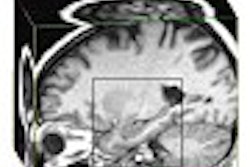Dear AuntMinnie Member,
Brain scans in airports. Functional "aggressiveness" exams for asymptomatic children. Is this the future of self-referred screening?
Maybe, according to Stanford University researchers who explore the topic in the first of a pair of articles we’re featuring this week in our CT Digital Community. The group has taken a proactive approach to the ethics of self-referred screening, and hopes to lay the groundwork for protocols and guidelines to prevent an anything-goes mentality from taking over the whole-body screening market.
The Stanford researchers would like to see clinical trials on whole-body screening of asymptomatic individuals, and studies that explore whether such services are offered equally to low-income and upper-income groups. The group's own survey revealed that self-referred CT services are typically located in predominantly white and wealthy communities.
In related news, another article in the CT Digital Community explores rising concerns over CT radiation dose. The growth of multislice scanning has earned CT the dubious distinction of being the only imaging modality where average dose rates have gone up rather than down in the last several decades.
Pediatric CT has drawn particular scrutiny. Children require less dose because their smaller body habitus attenuates fewer x-rays, but some facilities still aren't adjusting their imaging protocols to account for this phenomenon, according to a group from the University of California, Davis.
To address this issue, the group has made available a chart in spreadsheet format that enables CT facilities to adjust their scanning protocols for pediatric patients. Using the chart can help providers maintain consistent image quality regardless of patient size, the UC group says.
To view both stories, as well as the latest research in CT imaging, visit our CT Digital Community at ct.auntminnie.com.



















